Now that we already dare to dream about a holiday, let's take a foretaste at home! When discovering a new destination, all senses are on alert. You are amazed and taste the ingredients of the destination in the food and drinks. Get to know the diversity that Portugal has to offer at home by taking a 'journey' through the seven wine regions. Be inspired by the stories behind the wines and look forward to a stay in the different 'quintas' where you can participate in tastings, workshops and the grape harvest.
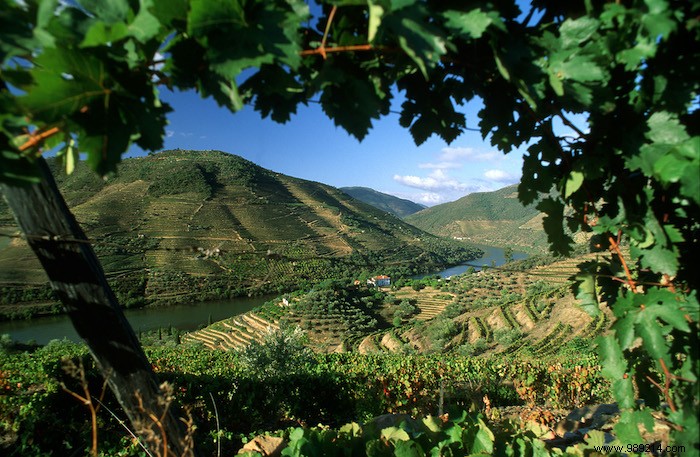
Douro | ©RCL-RuiCunha
Porto &Northern Portugal
The north of Portugal is known for Douro, Port wines and Vinho Verde. The 'green wine' comes from the green north. This wine is distinguished by its high acidity and low alcohol content. Now that spring has arrived and the temperatures continue to rise, a glass of Vinho Verde is refreshing.
In the past, the “rabelo” boat was used to transport port wine barrels via the Douro River to the wine cellars in Vila Nova de Gaia, on the other side of the city of Porto. This is where the wine was stored and later marketed. These boats can still be admired in the Douro River in Porto. There are different types of Port wines:White and Pink (drunk as an aperitif), Ruby and Tawny (delicious with dessert). Vintage port is often taken out of the closet for a special occasion. They are all perfect for a special port tasting. With a glass of Port you bring the Portuguese atmosphere into your home. If you want to fully immerse yourself and look for a special accommodation, you can stay in a wine barrel in this region!
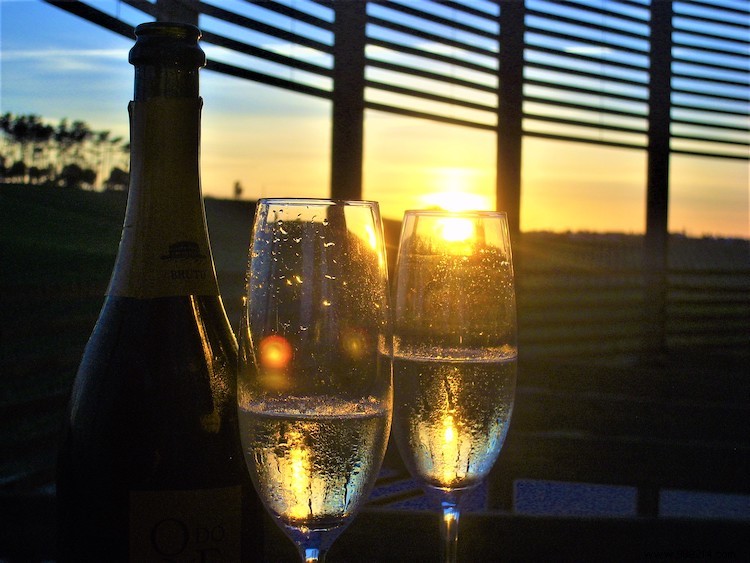
Bairrada | ©TdP
Centro de Portugal
One of the wines from this region, Dāo, is perceived by many as the Portuguese 'Burgundy'. The Dāo is located in the highlands, rising from 200 meters above sea level to 1,000 meters in the Serra da Estrela. The altitude ensures cool nights and therefore slow maturation, high acidity and complex aromas. The star grape of the region is Touriga Nacional, the most prized Portuguese grape variety. As a tourist you can also stay at many vineyards. The wineries are not only breathtaking to see, but also educational to stay in. The local farmers are only too happy to take you as a guest into the production process and the history of the Dão.
In the western part is the Bairrada wine region. A region with a mild maritime climate. Sparkling wine is mainly produced here, known as “espumante”. The high acidity produced by the cool Bairrada climate is the basis for this.
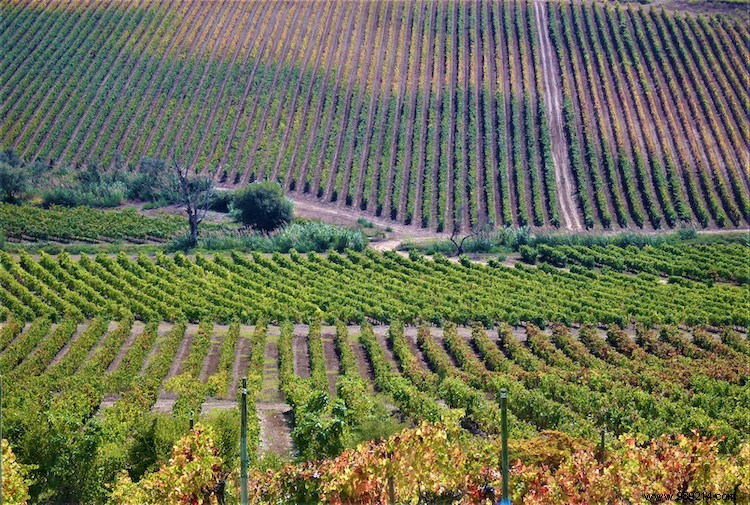
Vineyard region Lisboa | ©TdP
Lisboa To the west and north of the city of Lisbon, the wine region of Lisboa was until recently known as Estremadura. The heat and the wind allow the grapes to ripen well and especially red wines are of high quality. The wines from this region are often combined with the many fish dishes such as “Amêijoas à Bulhão Pato”.
A local fame is the ginjinha. Ginjinha is to the 'Lisboeta' what jenever is to the Dutch. The ginjinha is made by pouring wild cherries into alcohol and combining them with sugar and other ingredients. The ginjinha is served in the form of a shot with a wild cherry at the bottom of the glass.
The Península de Setúbal is largely flat with the exception of a short mountain range, the Serra da Arrábida. Here the grapes are grown for the famous sweet Moscatel de Setúbal wines. A wine can only be labeled as Moscatel if more than 85% of the blend contains Muscat.
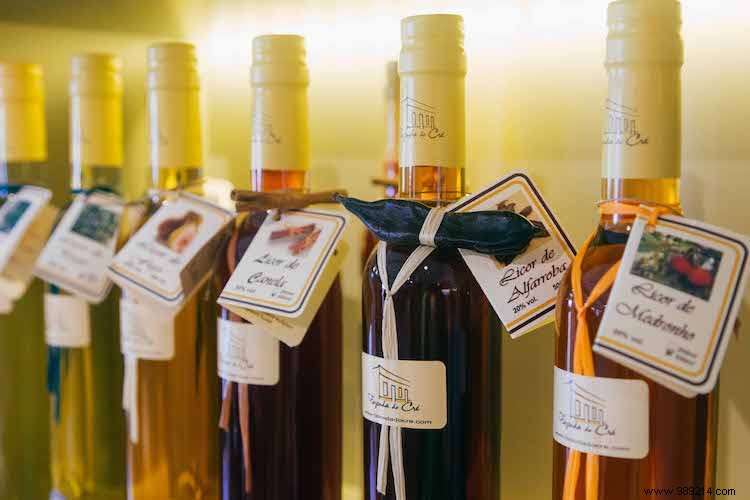
Borba vineyard | ©CM Borba
Alentejo
The Tejo (The Tagus), crosses Portugal. The Alentejo is known for its vineyards, olive groves, cork forests and the Lusitano horse. The Tejo reds are rich and fruity and can be found on the wine lists of restaurants all over Portugal. A wine from the Alentejo almost always has a special story behind it and is therefore material for an interesting conversation. Especially the story of Vinho de Água, or Water wine. This is matured for 6 to 8 months at a depth of 30 meters in the water of the Alqueva reservoir.
The Roman presence in the Alentejo is hard to avoid. It is not only the presence of Roman ruins but also the rows of huge wine jars, called “talha”. They are not only used for decoration. They can even hold up to 1000 liters of homemade wine, called “vinho da talha”, made exactly like the Romans used to make wine.
In Alentejo you can also enjoy vinotherapy treatments. Here you can experience the power of grapes in beauty and massage treatments, which are provided by specially trained vinotherapists.

Liqueurs from the Algarve | ©Algarve Tourism Bureau
Algarve
Wine producers love Portugal's southernmost region for the same reason that tourists do. It is never too hot or too cold and you are virtually assured of more than 3,000 hours of sunshine a year. The four main cities here have given their name to the four DOCs of the region:Lagos, Portimão, Lagoa and Tavira. Although Algarve is not known for its wines, it is certainly an area to keep an eye on. You do not often see the wines that come from there and that is precisely why they are interesting to try.
Algarve also has several typical liqueurs such as those of alfarroba (carob), figs and almonds. You can drink the different liqueurs (20% alcohol) as an aperitif, digestive or in a cocktail.
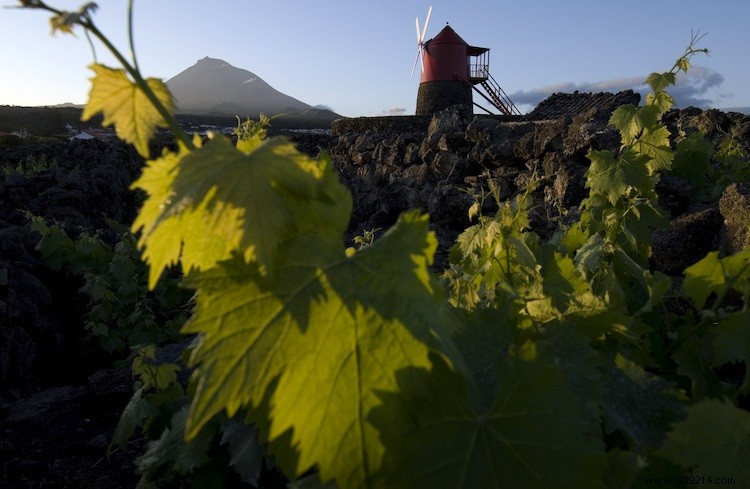
Pico | ©Antonio Sá
Azores The Azores are an archipelago of nine islands. The climate is mild all year round. Vines are planted here in rocks or poor volcanic soils. White wine is mainly produced in the Azores.
The vines in Biscoitos, on the island of Terceira, are protected by walls of lava. The vineyard landscape of Pico Island was recognized as a World Heritage Site by UNESCO in 2004. These vineyards date back to the 15th century. The vinho do Pico was used by the Tsars as a perfume because of the wonderful smell.
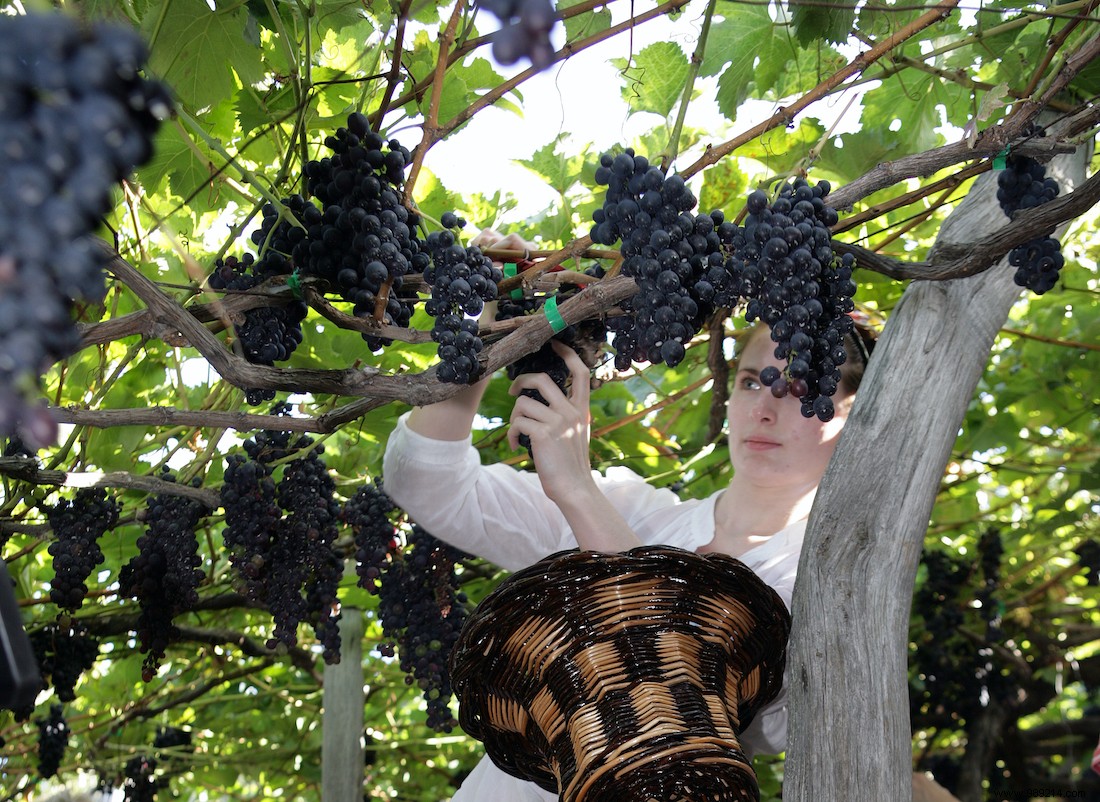
Wine Festival Estreito de Camara de Lobos | ©AP Madeira
Madeira
A wine named after an island and an island named after a wine. This “nectar”, which enjoys world fame, is the business card of Madeira. The Madeira wine, which was chosen to celebrate the independence of the USA in 1776, has been praised by Shakespeare. Although there are more than 30 different grape varieties, the following have the most qualities:Sercial, Boal, Verdelho and Malvasia. The Sercial is mainly used for the dry wines. These wines are ideal as an aperitif, light, very fragrant and have a light color. Verdelho is a delicate wine, fairly fragrant, has a golden color and is best served with a meal. Semi-sweet, mild, noble, velvety, with a dark gold color, the Boal is best suited between the roast and dessert. Between courses or with dessert, there are few wines that can beat the Malvasia. It is a sweet wine, with a powerful aroma and a red colour.
The Madeira wine harvest festival in September is always a good reason to visit Madeira. In Estreito de Câmara de Lobos, a town 12 km from Funchal, the live grape harvest is an excellent opportunity to participate in one of the oldest local traditions, whether you're picking grapes or taking part in the harvest parades.